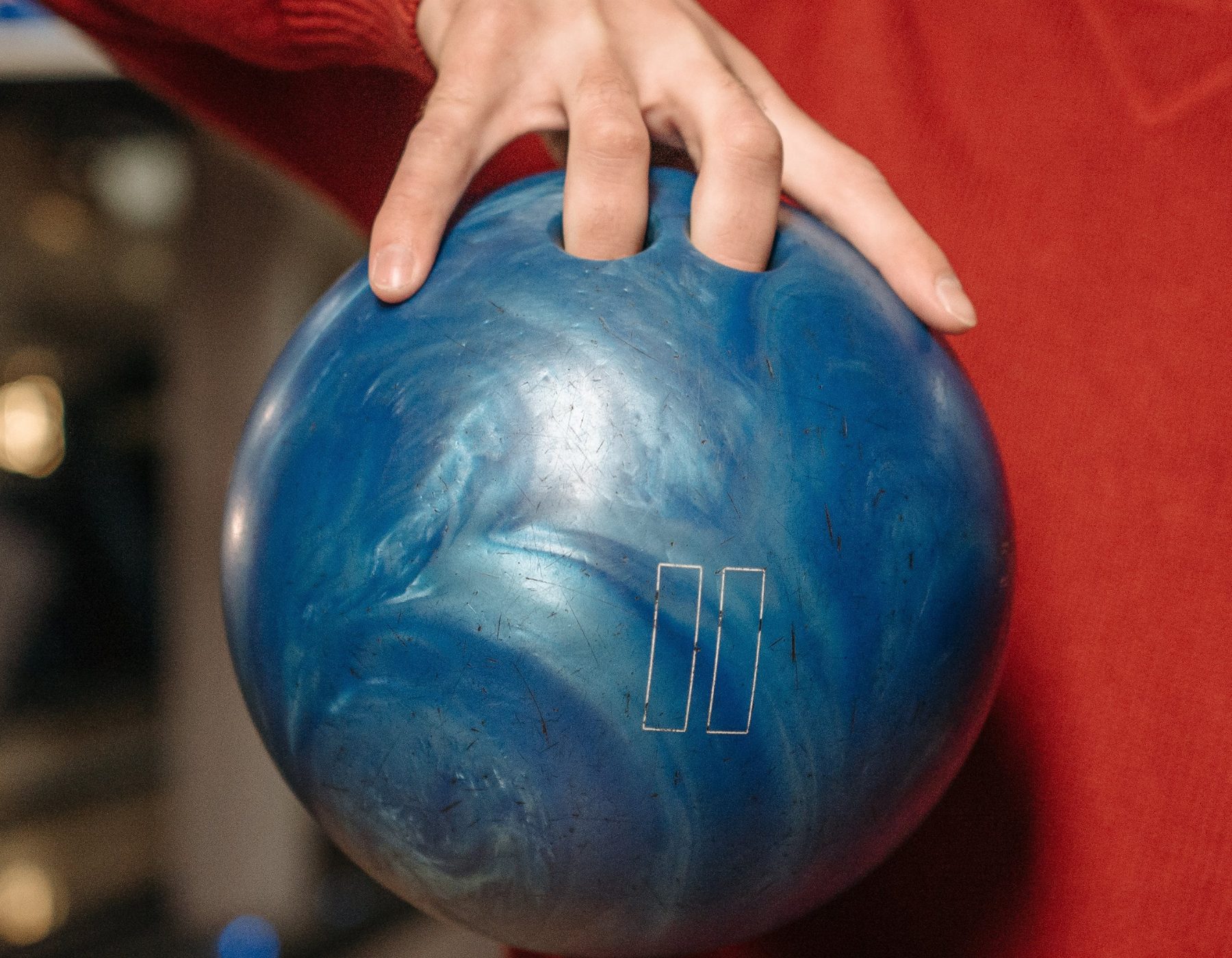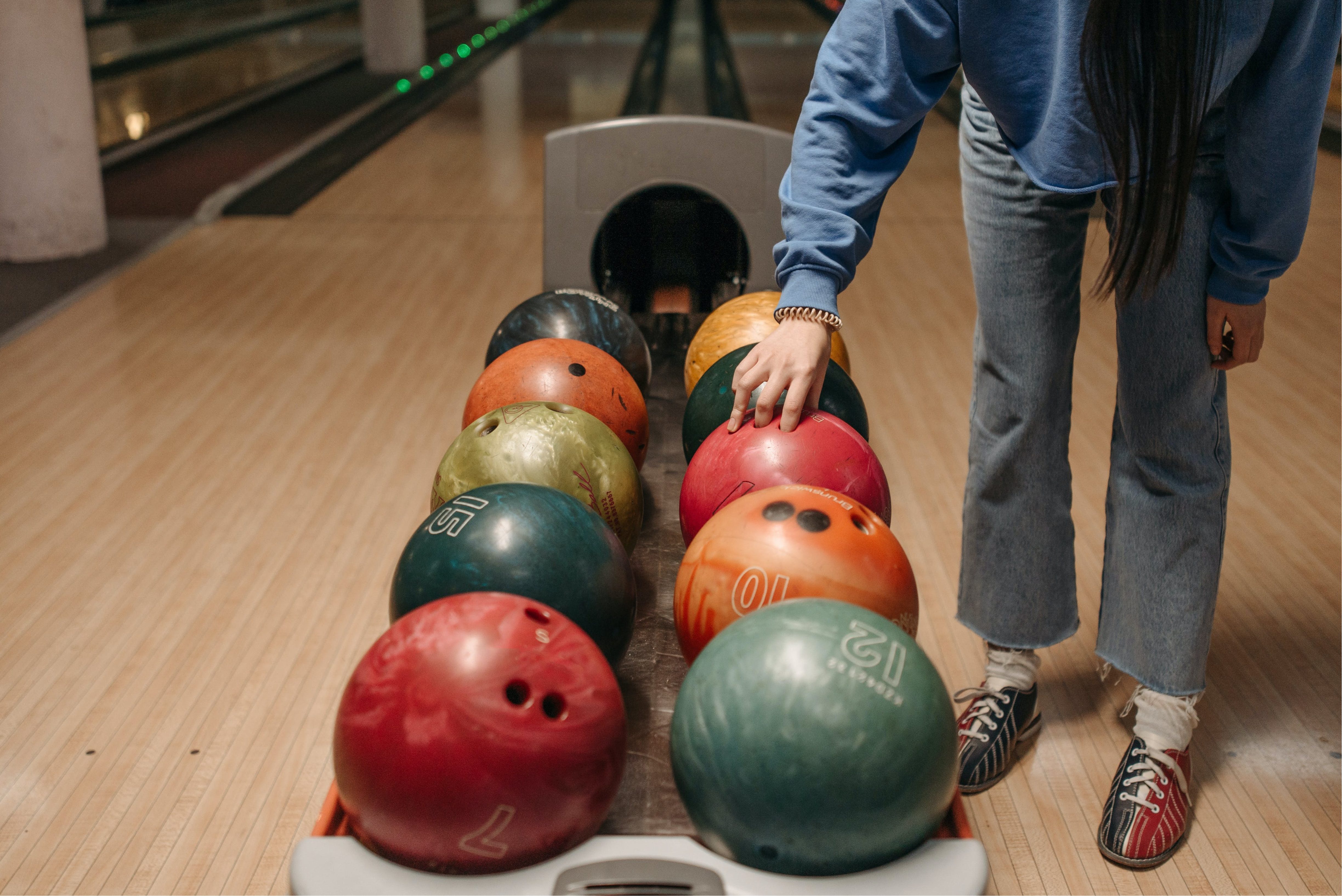Aiming and launching the ball is the second thing; the first is how to hold a bowling ball properly. Even if you have a good releasing technique, it won’t work if you don’t hold the ball properly.
Shaking, detracting, and inconsistent speed are the symptoms of not correctly holding the ball. Holding it too loosely or tightly is also considered a fault, so you must know the right grip to hold a bowling ball.
There are some things you need to know in order for you to learn the art:
Table of Contents
Right Ball Weight
First things first, choosing the right ball weight is essential for a good grip. The weight depends on the holding capacity of your arm muscles. If the ball is heavy, it will cause restraint to your arm; if it is too light, it will make you lose control.
This rule says to pick a bowling ball that is 10% of your body weight. This rule is considered accurate in helping you find the correct ball size. In addition, you can try holding different sizes and weights of balls to find the one you are comfortable with.
Which Fingers To Use?

Now, inserting fingers is another important part to consider. While holding a ball, your finger should be inserted in the holes deep till the second knuckle. There are three holes in the ball. Two are for inserting fingers, and one is for inserting the thumb; the large one is for the thumb.
Insert your middle and ring fingers into the smaller holes, and your thumb will be inserted into the larger hole. Ensure that your fingers are inserted properly, but the grip should not be tighter, allowing proper room for movement.
Ball Holding Techniques
Professionals use different techniques whether it’s straight shots or giving a curve using special best bowling balls for hook. Depending on your ease and expertise, they all allow different angles and wrist movements.
| Holding Technique | Steps to Follow |
| Conventional Grip | 1. Insert your fingers up to the second knuckle into the finger holes. |
| 2. Place your thumb into the larger thumb hole. | |
| 3. Ensure a secure and comfortable grip without squeezing too tightly. | |
| 4. Position your hand with the palm facing the opposite side of your bowling arm. | |
| Fingertip Grip | 1. Insert your fingers only up to the first knuckle into the finger holes. |
| 2. Place your thumb into the thumb hole as in the conventional grip. | |
| 3. Maintain a relaxed but secure grip on the ball. | |
| 4. Rotate your hand slightly to the side with the palm facing opposite your bowling arm. | |
| Sarge Easter Grip | 1. Insert the middle and ring fingers to the first knuckle into the finger holes. |
| 2. Rest your little finger against the ball without inserting it into a hole. | |
| 3. Insert your thumb into the thumb hole. | |
| 4. Find a comfortable and secure grip that balances control and power. | |
| Customized Grip | 1. Consult a bowling pro shop or skilled ball driller for customized drilling. |
| 2. Provide accurate measurements of your hand size and shape. | |
| 3. Drill the finger and thumb holes to fit your hand precisely. | |
| 4. Ensure a comfortable grip that maximizes control and minimizes discomfort. |
Of all, the Fingertip grip is more accurate and advanced, allowing the player better control and a higher rev rate. While practicing this grip, your middle and ring finger are inserted only up to the first knuckle, allowing increased flexibility and lift to your movements.
But if you are a beginner, you should start with a conventional grip as it helps you to learn ball hold, then move gradually toward the fingertip grip to include flexibility in your throw.
Practice Relaxed Grip

Bringing tension or stiffness to your hands will harm your grip. Practicing a relaxed grip will help you with the smooth release and add more revolutions to the ball while rolling down the alley.
Squeezing the ball tightly can result in early or late release; both are not good for the game. In short, your grip should be slightly firm, but focusing on a smooth movement with enough room for your fingers to move.
Position Your Hand
A good hand position is necessary for controlled release on the bowling alley. Your hand is supposed to rotate slightly to the side, with your palm facing the opposite side of your bowling arm.
This hand position will be easy on your wrist and allow you to generate more revolutions in the ball. Try to avoid rotating your wrist on different angles; it will save you from the risk of injury and help you with scoring the highest score in bowling.
Practice Your Release
After learning a proper grip, it’s time to go for release-the-ball practice. Your release must be controlled and clean, involving a smooth swing action; open your fingers when releasing the ball.
Please do not put too much pressure or jerk on the ball while releasing it. Jerking the ball while throwing will cause it to de-track from the main aim.
Wrapping Up
There are some base points to memorize to learn how to hold a bowling ball properly. That is choosing the right weighing ball, the correct way to insert fingers, focusing on the grip, and practicing a release technique. You can experiment with different holding methods to see which is easy on your wrist movement and can generate more revolutions in your ball.
Holding a ball and releasing it down the alley requires strong arm muscles and writ action, so work on that to reach a complete package.
FAQs
How Do Professional Bowlers Hold The Ball?
The professional holding technique is to move your index finger out and hook your middle and ring finger into the holes till the second knuckle along with your thumb. Move your index finger along with the wing action while releasing.
Can I Bowl Without My Thumb?
It depends on the balancing technique; the ball has a devoted hole to insert your thumb. The thumb helps you with the delivery efficiently, but if you are good without it, there is no rule for using the thumb.
How To Stop Squeezing The Bowling Ball?
Focus on a relaxed and maintained grip, and lose your hand and finger muscles to flexibility. Always practice a smooth release with a delicate touch, allowing the ball to rest comfortably in your hands.





